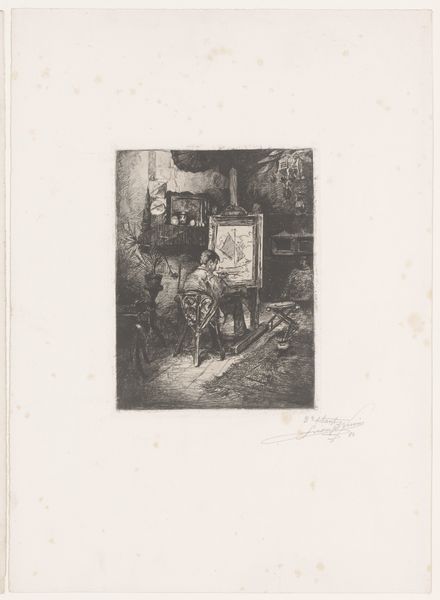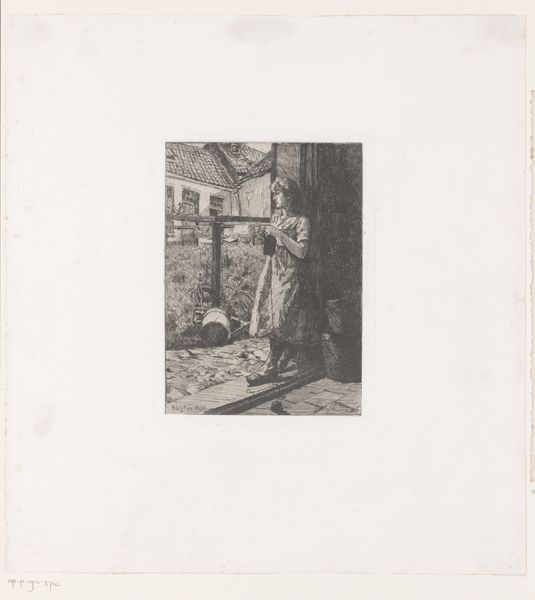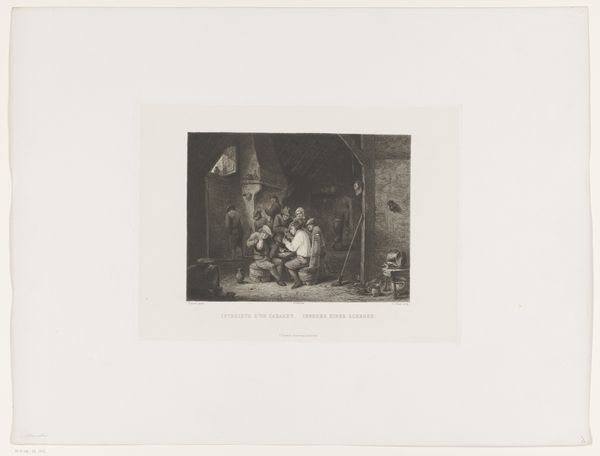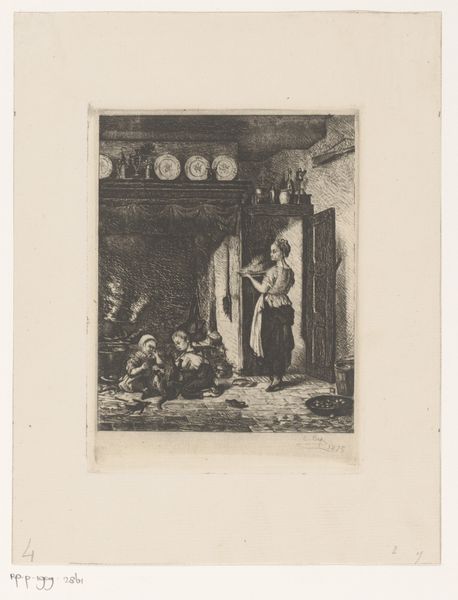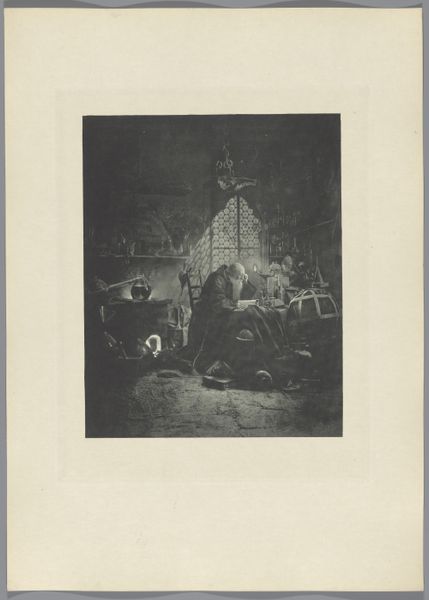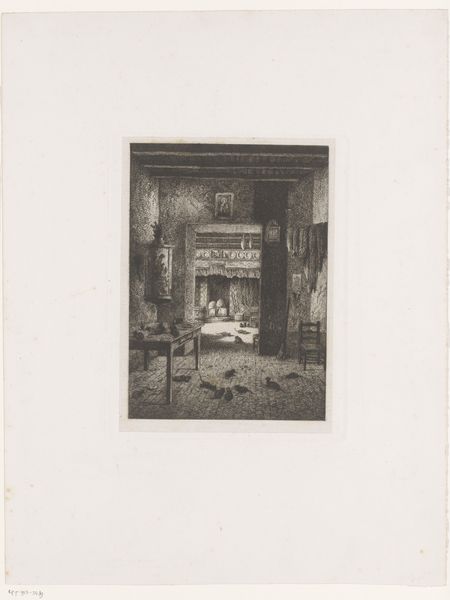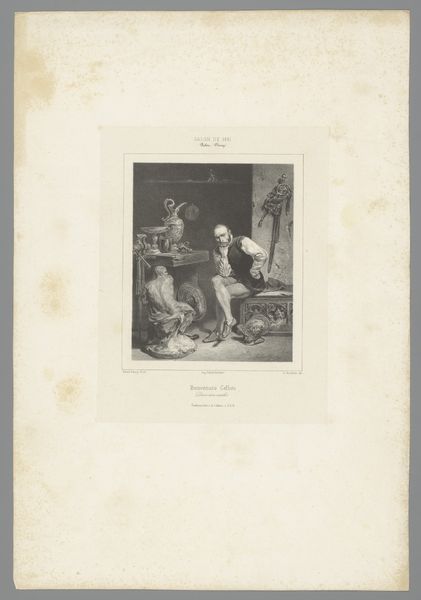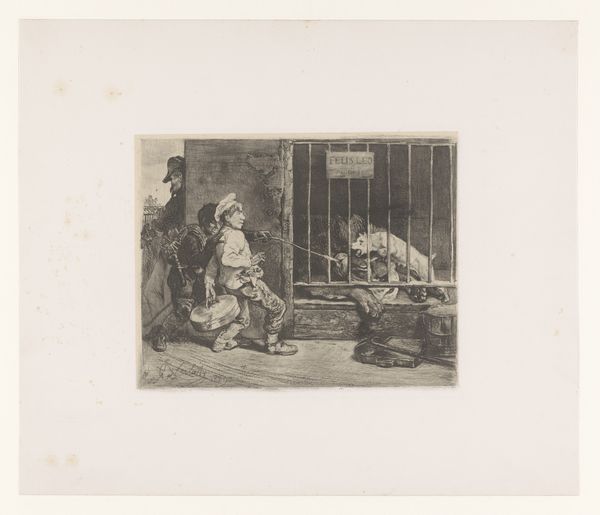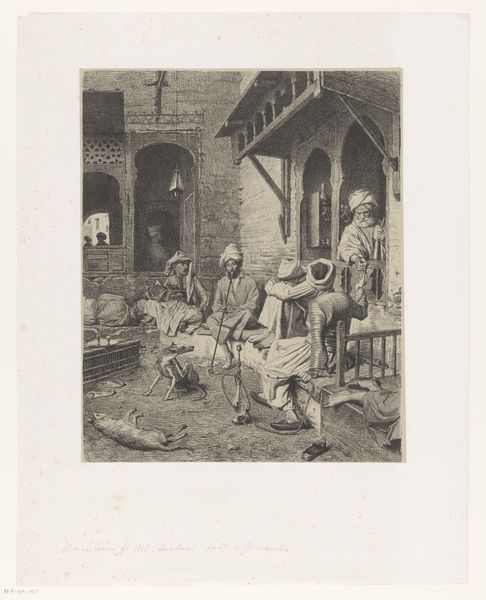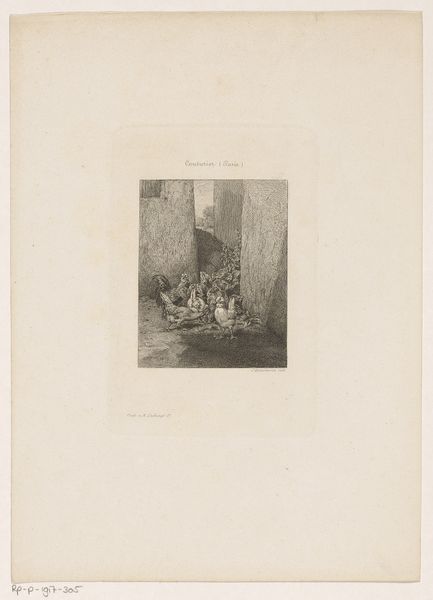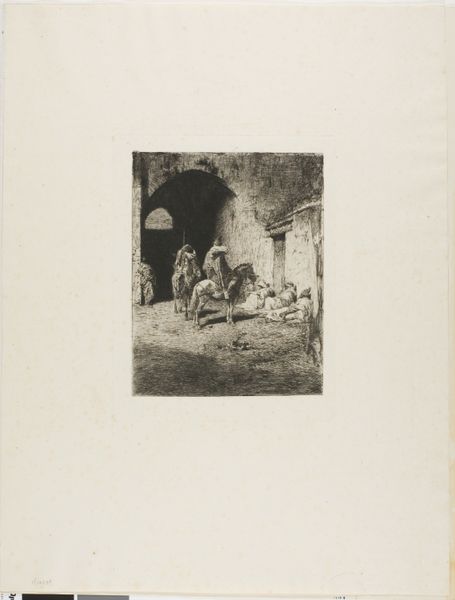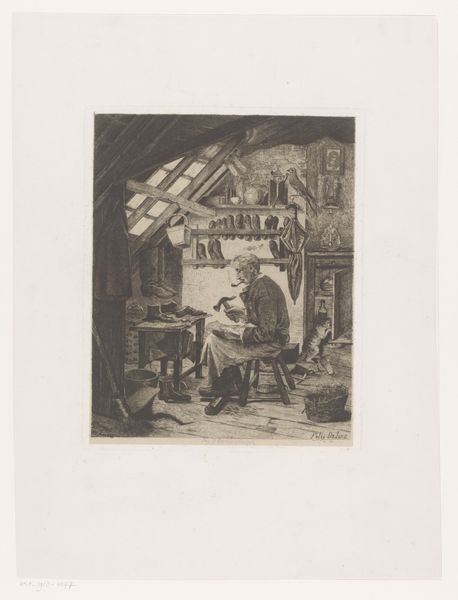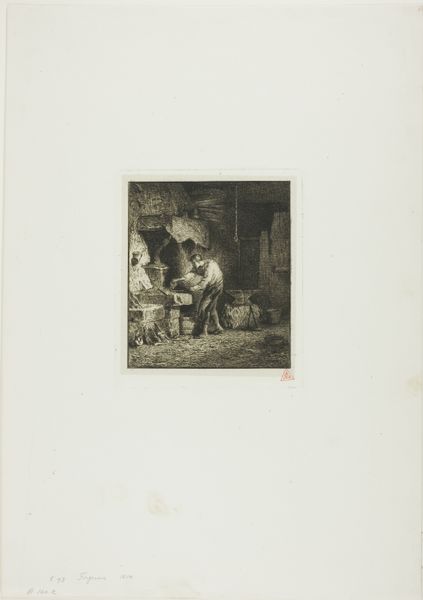
drawing, print, engraving
#
portrait
#
drawing
#
mother
# print
#
figuration
#
genre-painting
#
engraving
Dimensions: height 395 mm, width 273 mm
Copyright: Rijks Museum: Open Domain
Editor: This is "Boereninterieur met vrouw en kind," dating sometime between 1836 and 1899, attributed to Alberto Pasini. It seems to be an engraving depicting a peasant interior. There's a sense of everyday life here, almost harsh with the wood and cooking implements. What aspects of the material conditions jump out at you? Curator: The fascinating thing to me is the starkness of the image. We see the materials of survival – wood, metal pots, rough textiles. Consider how these materials were sourced and transformed through labor. The etching gives a gritty texture that emphasizes the process of its making. This is not simply a depiction of domesticity, but evidence of the labor required for survival. The print itself allows mass reproduction and thus a wider consumption of this image. What effect do you think the means of its distribution may have had? Editor: I hadn't considered the printmaking aspect impacting its interpretation. Perhaps it romanticized or exoticized peasant life for an audience far removed from it. Would that be fair? Curator: Precisely. The artwork becomes a commodity, depicting labor but also obscuring it. The materials, the technique of engraving, and the broader social context of consumption all become part of its meaning. Did the production of this image involve a single craftsperson, or a team? And who would have owned this artwork: a single family or a wider section of society? What assumptions does it expose, perhaps unintentionally? Editor: This gives me a whole new perspective. The materials used, the means of production, it all shapes our understanding. I didn't really think about all the things around the central subject having significance. Curator: It encourages us to move past pure aesthetics. Editor: Exactly. Thinking about those tangible details is the core of its story.
Comments
No comments
Be the first to comment and join the conversation on the ultimate creative platform.
